
15 Top Places to visit in Delhi Overview:
Delhi can best be described in one word: “experience.” That’s definitely how the city makes you feel. Delhi is at once welcoming, exciting, demanding, fun, and enriching. Located in the middle of India, Delhi is sometimes referred to as “Bharat ka dil” (the “heart of India”). This city has opportunities that you would not find elsewhere. You can build a successful career with this.It’s a game changer. It is made by the government. As well as other things, it helps businesses succeed. The focus in Delhi is on living your best life.
A blend of history and modernity, customs and culture, business and fashion, and a location where all religions coexist. Delhi’s culture and lifestyle are unique. Chandni Chowk and old Delhi are representative of Delhi’s more traditional lifestyle, while Vasant Kunj and South Extension showcase the city’s more up-to-date side.
Delhi is where you may first view the newest and best fashion trends in the country. The centre of the nation is the best place to go if you’re a foodie. The city has both cheap street cuisine and world-class restaurants providing expensive foreign dishes. Visit Delhi at least once in your life if you want to see a crazy but sophisticated side of life.
.. Here is a list of places you really must see while you are in Delhi in order to appreciate the intensity of the city. Have a look.
The Best Places to Visit in Delhi
1. Akshardham Temple

It comes on the list of 15 top places to visit in Delhi. The Akshardham Temple is both a holy Hindu shrine and a cultural and architectural marvel, representing the best of India in every respect. Swaminarayan Akshardham is another name for the temple, which is loyal to Lord Swaminarayan. According to Guinness world record, Akshardham is the largest Hindu temple in terms of square footage.
Beautiful designs can be seen all around the Akshardham Temple. There are eight elaborately carved mandapams, and the walls are covered with both ancient Hindu texts and colourful devotional rituals. The centrepiece, Lord Swaminarayan’s Murti, displays the essence of Indian architecture, traditions, and everlasting spiritual ideas combined with those of 20,000 deities, notable figures from Indian history, and sages.
2. India Gate

India Gate, or the All India War Memorial, is a monument in New Delhi, India. It is situated on Rajpath. India Gate, like the Arch de Triomphe in France, the Gateway of India in Mumbai, and the Arch of Constantine in Rome, is an outstanding landmark. Among the tallest buildings in the country, this monument to the fallen was created by the great architect Sir Edwin Lutyens and stands at a towering 42 metres. Every year, the Republic Day Parade is held at India Gate, which is also a famous landmark.
This memorial, which honours the 82,000 Indian and British servicemen who lost their lives in World War I and the Third Anglo-Afghan War, features the names of 13,300 servicemen. The Amar Jawan Jyoti, a flame-lit structure, is located just beneath the India Gate arch and is part of the India Gate complex. India Gate is a popular city picnic spot because of its stunning architecture and fascinating history.
3. Humayun’s Tomb
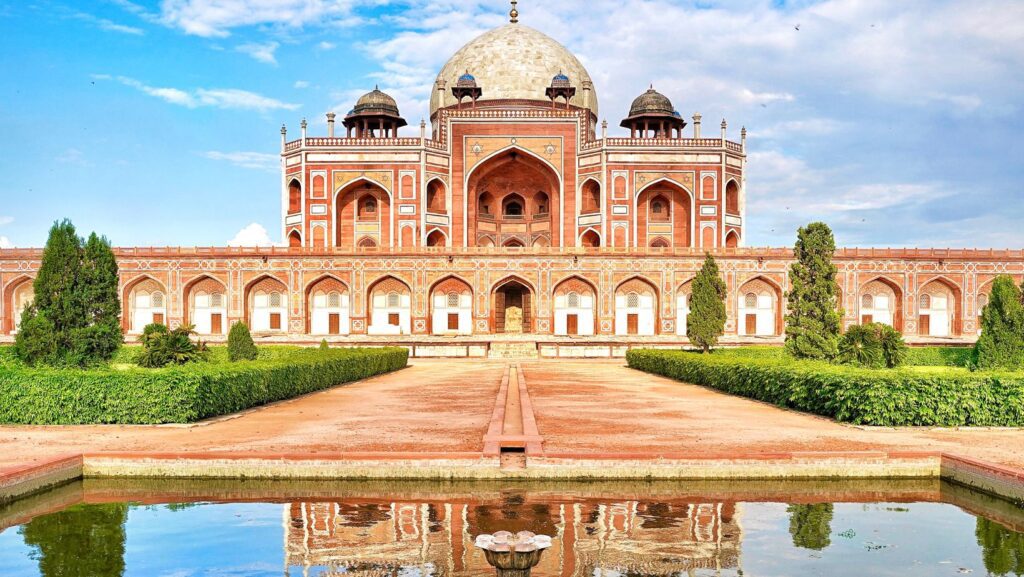
The Mughal Emperor’s Tomb, also known to as Humayun’s Tomb, was built in Delhi between 1569 and 1570. Humayun’s first wife and primary consort, Empress Bega Begum, commissioned the building of his tomb.
The Begum enlisted the help of Persian architects, including Mirak Mirza Ghiyas and his son, Sayyid Muhammad. In Nizamuddin East, you’ll find Humayun’s Tomb, the first garden tomb in the Indian subcontinent. In 1993, it was designated a World Heritage Site by UNESCO. The Humayun’s Tomb gardens, known as the Charbagh, are just as beautiful as the tomb itself. These gardens, designed in the traditional Persian manner, offer a peaceful respite for tourists.
Humayun’s tomb is located in Delhi’s Nizamuddin district. Due of its close proximity to the Sufi saint Hazrat Nizamuddin’s tomb, Nizamuddin Dargah, this choice was made.
4. Qutub Minar
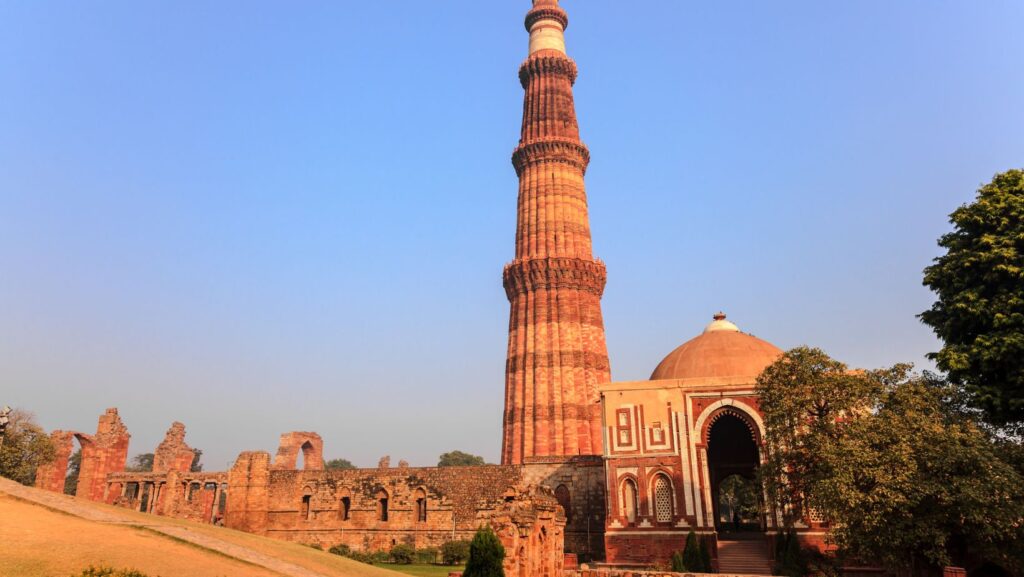
India’s tallest minaret is the magnificent Qutub Minar, which was built and finished in the 12th century. As a UNESCO World Heritage Site, it’s become a popular tourist attraction.
This tower, featuring more than 70 metres of height and a height of five stories, is decorated with beautiful carvings that tell the story of Qutub and include verses from the Koran. There are many different kinds of stone used in its construction, which is very noteworthy (the lower three floors are constructed from red sandstone, while the upper two floors are made of marble and sandstone.).
The Quwwat-ul-Islam Masjid mosque, a 1310 gateway, and the tombs of Altamish, Alauddin Khalji, and Imam Zamin are all part of the site.Alai Minar, or Iron Pillar, has stood for nearly 2,000 years and is worth seeing.
5. Museum of Illusions
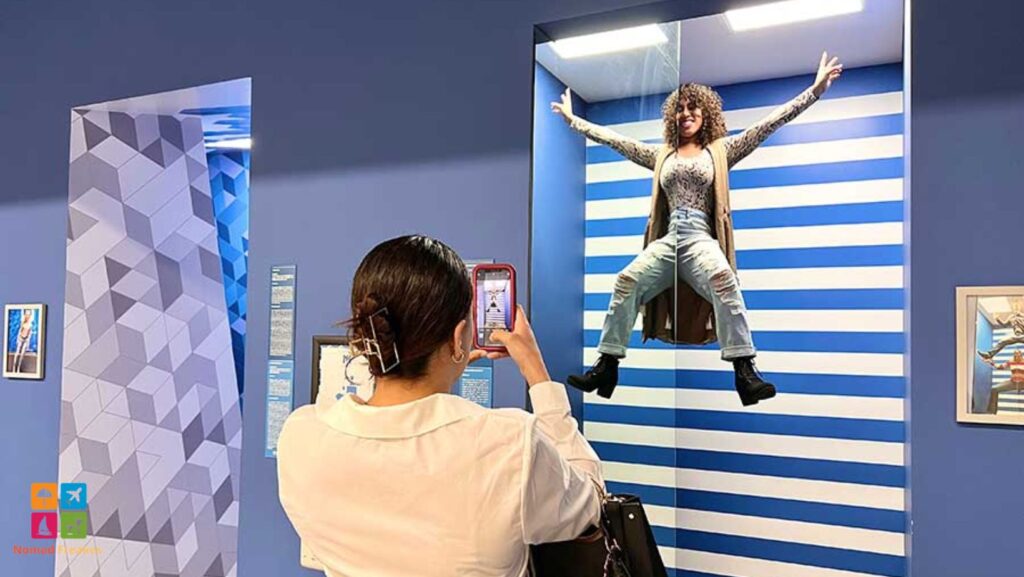
The Connaught Place in New Delhi is home to India’s first dedicated museum to optical illusions, the Museum of Illusions. It’s a lot of fun to test your perceptions by wandering through exhibitions like holograms, a supposedly rotating cylinder, a room with no gravity, rooms with mirrors that distort reality, and lots of other stuff like that.
Holograms, pictures capable of creating a variety of 3D illusions that change or vanish on a regular basis, fill the museum’s halls. The viewer can also interact with a stereogram, a type of photograph, or view a photo illusion, which can have any number of different backgrounds. There is a secret 3D-looking object within it, but you can only see it from a particular viewpoint. Puzzles, math games, building blocks, impossible knots, and more are in the smart playroom. The Smart Shop stocks a wide variety of toys, mementos, and mini-magic tricks.
6. Lotus Temple
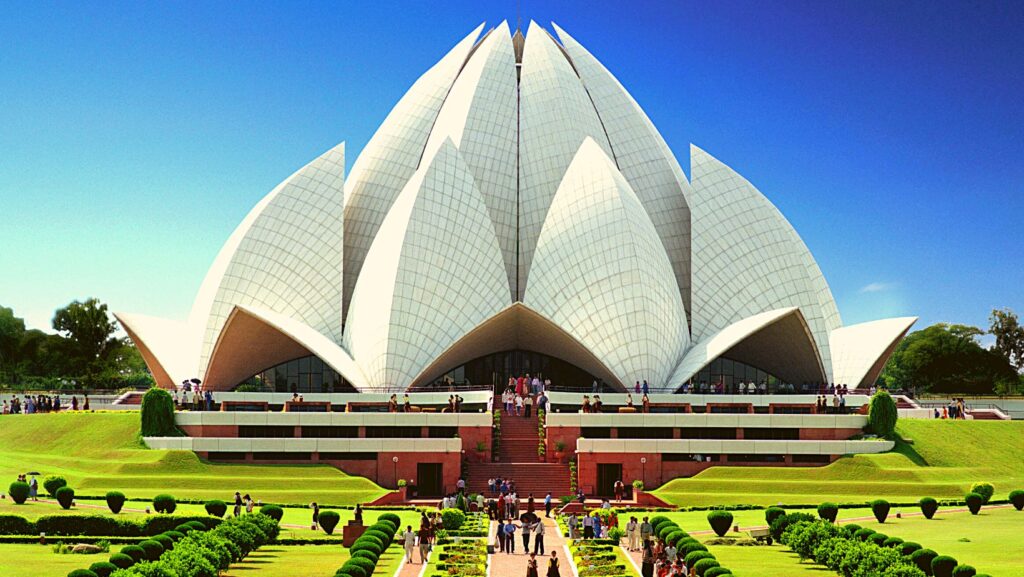
The Lotus Temple is a must-see attraction in Delhi. This Baha’i house of worship is well-known for having a form like a lotus flower. Built in the late 1980s at a cost of about $10 million, the Lotus Temple finally opened to the public in December 1986. The beauty of the temple is just one of its many draws. Visitors come from all over the world to experience the Lotus Temple’s renowned peace and serenity.
One of the best things about this temple is that it welcomes visitors of any faith, social status, or ethnic background. Tourists continue to flock there, however, for no other reason than its stunning architecture.
In fact, it has received numerous honours. Between April 2013 and April 2014, 100 million people visited the Baha’i House of Worship in India. To this day, it remains one of the world’s most popular tourist attractions. Travelers from all over the world come to view this architectural masterpiece and marvel at its beauty.
7. Jantar Mantar, an Astronomical Clock and Sundial
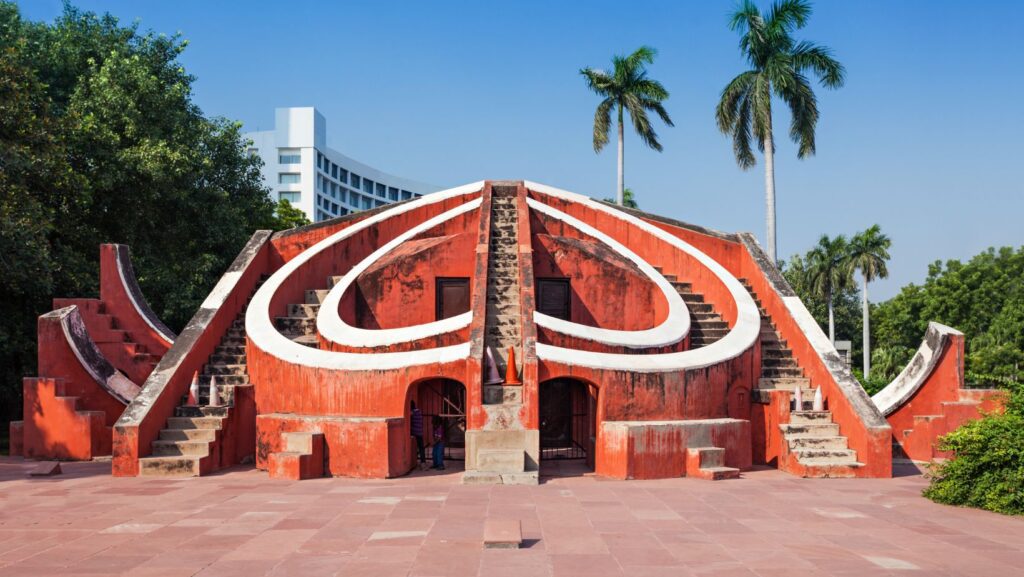
Near Connaught Place, one of New Delhi’s largest and most well-known business districts, stands Jantar Mantar, one of five astronomical observatories built by Maharajah Jai Singh I in 1725.
This well-preserved old building exhibits obsolete machinery used to track celestial planets and predict eclipses. It was set up so locals can also see the sky and track the sun, moon, and stars. The giant sundial known as the Prince of Dials, one of the building’s highlights, is extraordinary and attractive from an architectural standpoint.
8. Museum of Art Gallery, Delhi
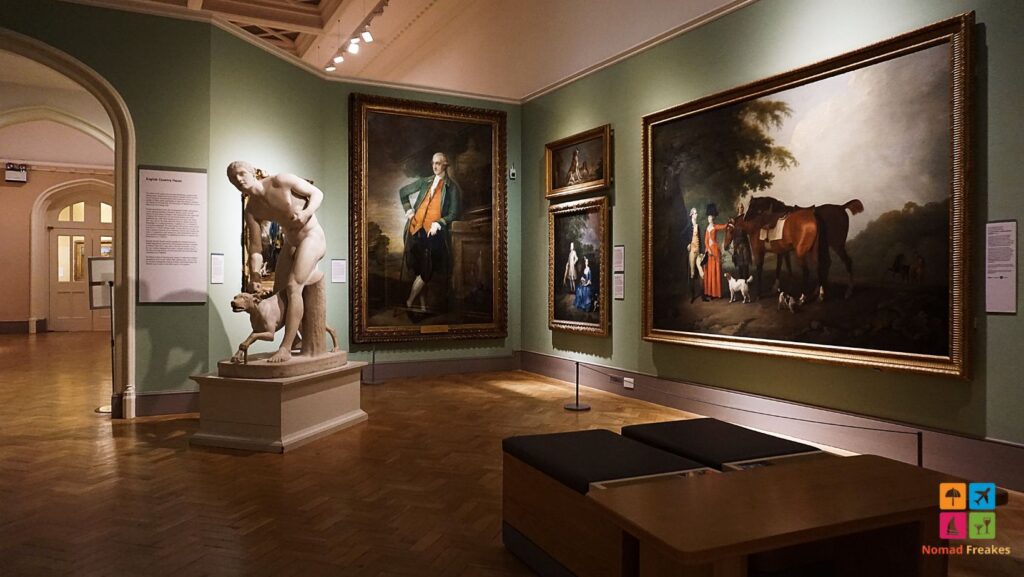
The National Gallery of Modern Art (NGMA) is like heaven on earth for the many art enthusiasts in India. The National Gallery of Modern Art, Delhi, has art from the 1850s as part of its objective to “present a wonderful world of art.” The Jaipur House, which houses the National Gallery of Modern Art (NGMA), is the most famous museum in Delhi. The Indian Government officially founded it on March 29th, 1954.This position is 12,000 square metres, compared to Mumbai and Bangalore. The gallery helps users connect modern art with their important passions for the human soul.
The museum has around 14,000 pieces of art, some of which are over 150 years old. The modern art museum features Thomas Daniell, Abanindranath Tagore, Raja Ravi Verma, Gaganendranath Tagore, Rabindranath Tagore, Nandalal Bose, and others.Through its visual galleries and various exhibitions, it perfectly combines modern and contemporary art. Follow your artistic muse in that direction and learn to appreciate the wondrous landscape of creativity.
9. Red Fort
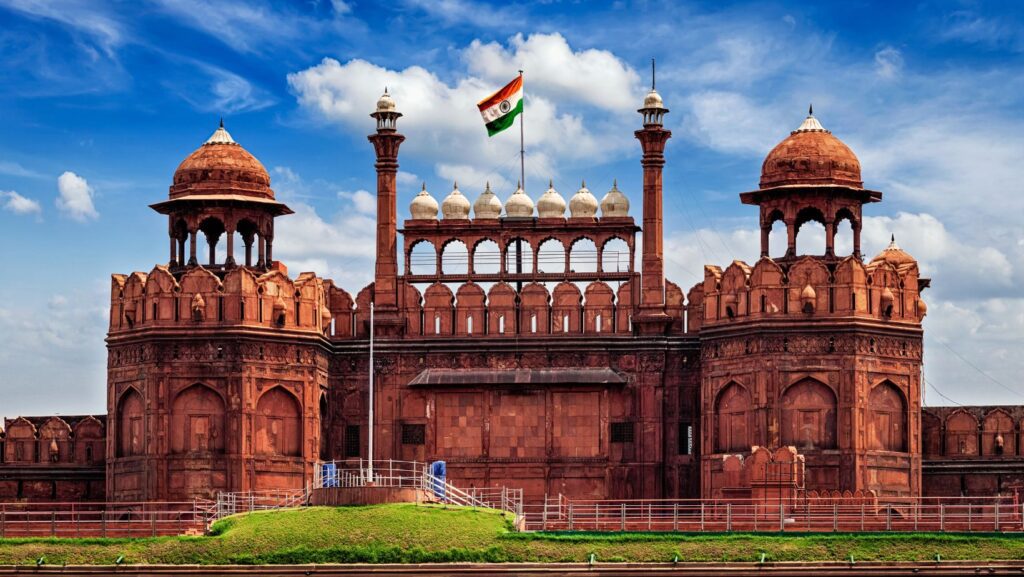
Located in the heart of Delhi’s historic district, the Red Fort is a famous military structure. Shah Jahan built it since the capital had moved from Agra to Delhi by 1639. This building’s name originates from its strong red sandstone walls, which were the Mughal rulers’ principal palace. It was the ceremonial and political centre of the Mughal state and the setting for major regional events. Several museums now call this historic site home, showcasing a wide range of priceless artefacts. On Independence Day, the Prime Minister of India traditionally raises the Indian flag here.
The Yamuna River provides water for the moats that encircle the Red Fort, formerly known as Quila-e-Mubarak, or the Blessed Fort. Shahjahanabad, popularly known as “Old Delhi,” was an ancient metropolis that included the region in its territory. The fort is frequently cited as a prime example of Mughal-era invention and genius.Due to its rich history and culture, the Red Fort is a popular tourist destination in Delhi and India. In 2007, it was recognized as a UNESCO World Heritage Site. At present, the Archaeological Survey of India is accountable for ensuring the safety and upkeep of this impressive structure.
10. Chandni Chowk
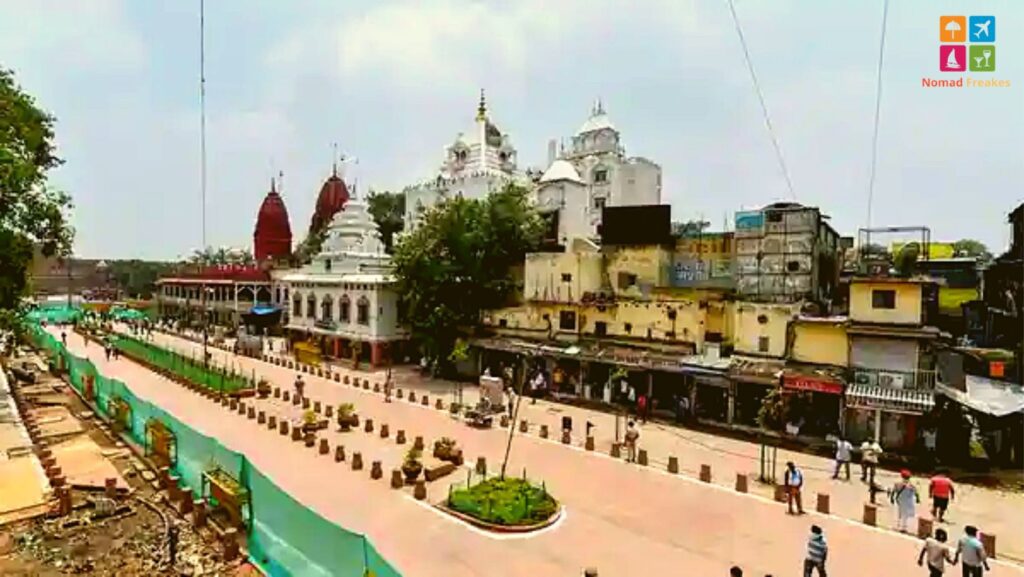
Chandni Chowk, one of Old Delhi’s oldest markets, is a busy wholesale market surrounded by hawkers and porters. This historical place sells several products, including food. 17th-century Mughal monarch of India erected it. From here, one can see the Red Fort and the Fatehpuri Mosque.
Chandi Chowk is a retail neighbourhood in Delhi with twisting, packed streets selling a range of goods. This part of Delhi has been known to as a “shopper’s paradise” since the 17th century. Under Shah Jahan, it had a canal surrounded by trees that reflected the moonlight. Chandni Chowk means “moonlight place,” which is how the area got its name. Chandni Chowk is the best place to go shopping because the market is spread out over multiple streets, each of which is packed to the gills with a wide variety of colourfully stall-lined shops selling everything from clothing and perfume to electronics and jewellery to candles and religious statues.
11. Village of Hauz Khas
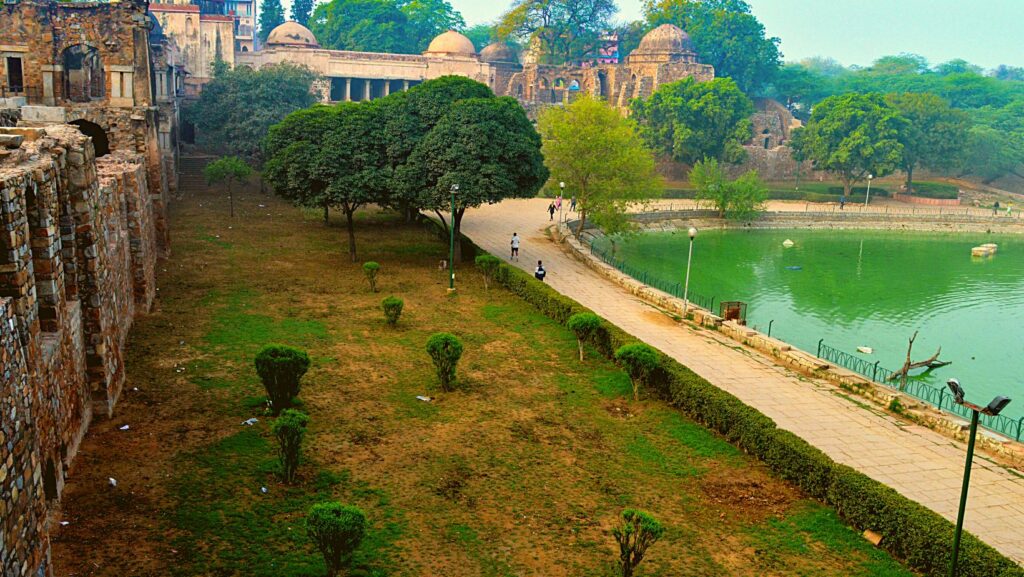
Hauz Khas, in South Delhi, is a posh area that has been popular with the city’s elite since medieval times. The original charm of Hauz Khas Village is still there thanks to the remaining Islamic architecture. These illustrations generally reflect posh urban changes. The area known as “HKV” has a vibrant nightlife thanks to the abundance of restaurants, clubs, bars, pubs, galleries, and shops.
It is situated in the centre of HKV and is surround by a reservoir and a park with well-kept walking trails. Domed constructions, which are the royal tombs from the 14th to the 16th centuries, are distributed around the area. When you get to the end of the path, you’ll see the tomb of Feroz Shah Tughlak, a famous ruler of the Tughlak dynasty.
Many cafes have live music on the weekends, from stand-up to jazz. The village’s current condition is both faithful to its historical character and aesthetically pleasing in its own right. Whether you’re a native of Delhi or just visiting, you’re sure to visit the city’s popular spots at some point.
11. Nizamuddin Dargah
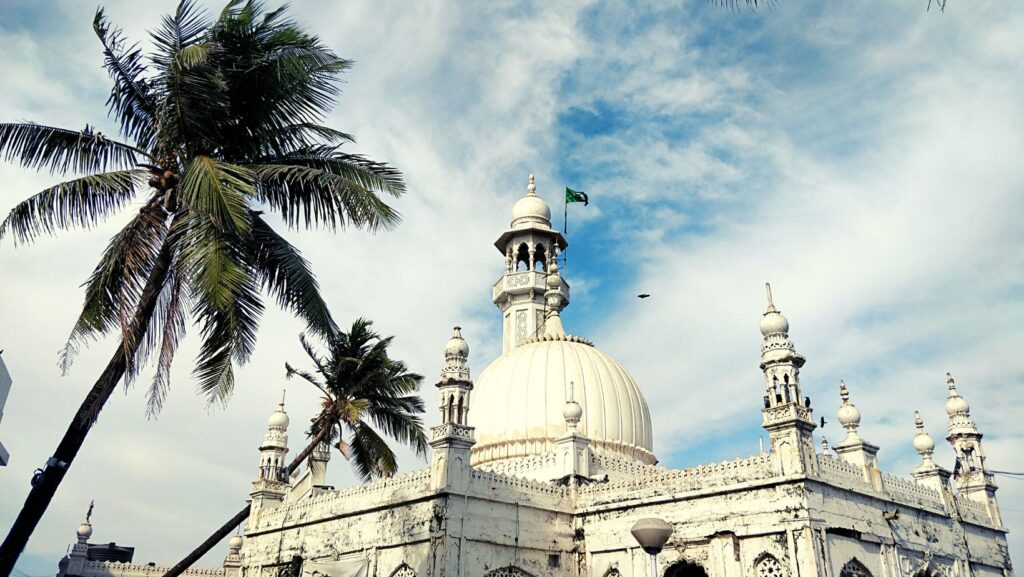
Hazrat Nizamuddin Dargah is a tomb and shrine in Delhi dedicated to Nizamuddin Chisti. The dargah was first built in 1526, and its complex is a lovely mix of red stone and white marble. The mission of Hazrat Nizamuddin Dargah is to promote the spiritual Sufi tradition that recognises no supremacy amongst faiths. Therefore, people of all faiths are welcome to visit the burial of the great saint, and they do so in the thousands every week. The grounds of the dargah also house the tombs of numerous other Mughals, including Jahan Ara Begum and Inayat Khan. In Nizamuddin Dargah is the tomb of Hazrat Nizammudin’s student Amir Khusro.
At the Hazrat Nizamuddin Dargah, you can encounter hundreds of devotees even in the evening. Every Thursday and Sunday, devotees can enjoy complimentary vegetarian meals at a langar. The culture of service in this place is well-known. On Thursdays and Saturdays, Hazrat Nizamuddin Dargah hosts qawwali and a Sufi singing session. Sufi singers gather to pay respect. One can spend hours listening to qawalls or meditating on the divine at Hazrat Nizamuddin Dargah.
12. Raj Ghat

The Raj Ghat is a peaceful spot in the historic district of Delhi. There is a tribute to the “Father of the Nation”, Mahatma Gandhi, at the Raj Ghat. A platform of black marble marks the spot where Mahatma Gandhi’s body was burned. After his murder on January 29, 1948, construction began on this memorial. One flame continuously burns on the memorial, which is open to the sky.
Raj Ghat, a popular tourist destination, can be found on Mahatma Gandhi Road, just next to the Yamuna River. Politicians, state guests, and historians all want to go there. At the entrance to the Raj Ghat, visitors are must take off their footwear. Beyond the confines of the building, a grassy space with a few trees and plants can be seen.
Visit Pandit Jawaharlal Nehru’s Samadhi in Shantivan while at the Raj Ghat to honour Gandhiji. Up north of Raj Ghat is where you’ll find Shantivan. In 2005, the country’s 10th president, K R Narayana, was cremated near Shantivan.
13. National Railway Museum
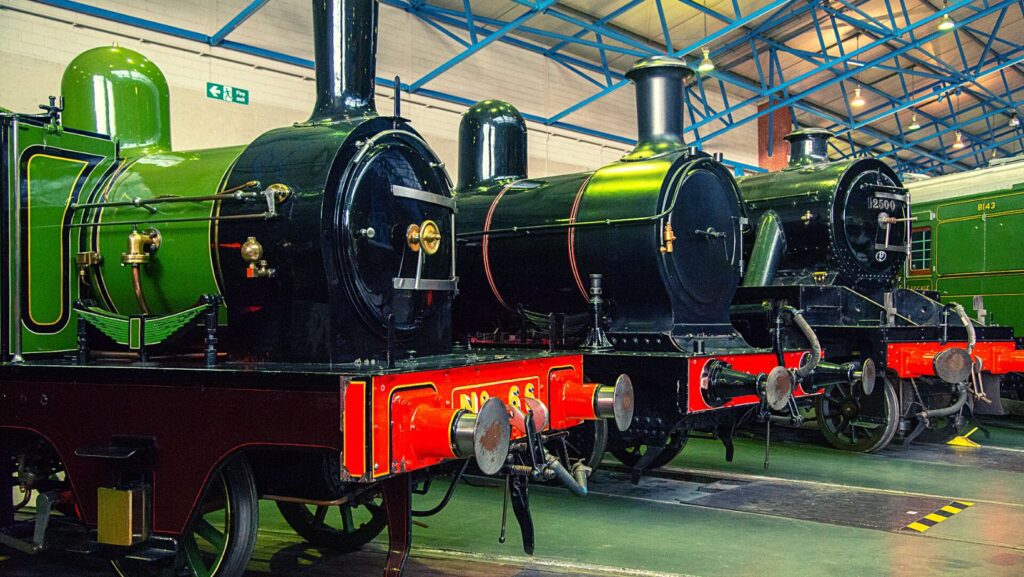
The 10-acre National Rail Museum has approximately 30 unusual locomotives and historic carriages. Three railroad generations of Indian history are on display, including a locomotive from 1885 and the Fairy Queen from 1855.
A collection of saloon cars once owned by the nation’s powerful Maharajas, including the ivory-covered teak carriage of the Maharaja of Mysore, the Prince of Wales’s cabin from 1876, and the carriage in which Gandhi’s ashes were transported following his 1948 assassination, are among the other highlights. A postal train ran over an elephant in 1894, and its skull is now on display. For kids, part of the fun is riding on a great standard gauge steam train.
14. The Mahatma Gandhi Memorial and Gandhi’s Writings
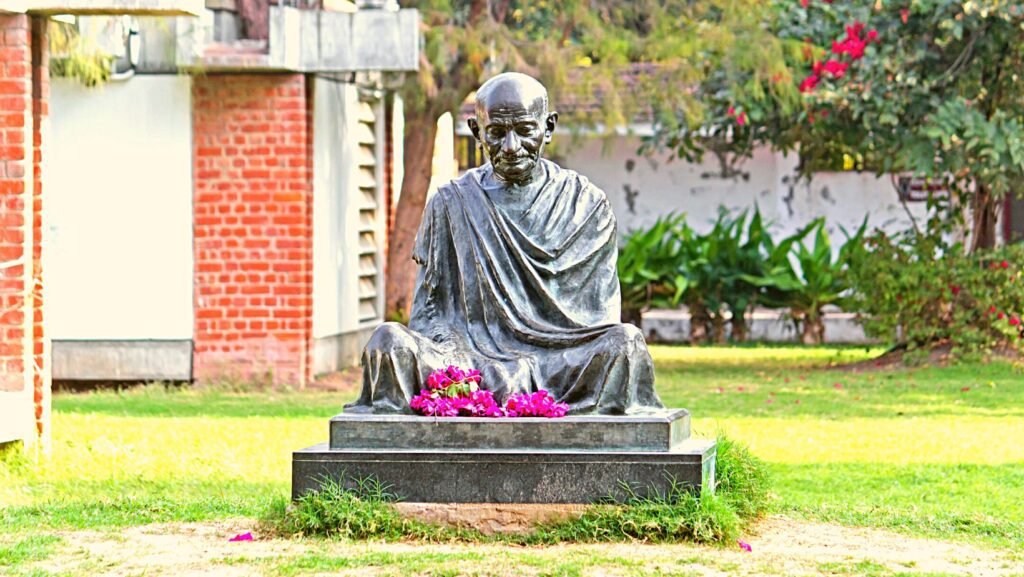
All across Delhi, you can find tributes to Mahatma Gandhi that serve as a lasting tribute to his legacy. Gandhi Smriti (Gandhi Remembrance), a museum located on the land where he was killed in 1948, is among the many tourist destinations dedicated to the illustrious leader of the Indian freedom movement and is maybe the best. There are displays and artefacts from both his life and deathThe visitor room he spent in during his stay has been meticulously kept in its original state. Another is the new Eternal Gandhi Multimedia Museum, which has historical records about all the things he did.
The gardens Gandhi liked to walk around are a must-see (the Martyr’s Column marks the location where he was shot). The sad memorial known as Raj Ghat is placed close to the spot where Gandhi was shot.
15. The Temple of Purana Qila (The Old Fort)
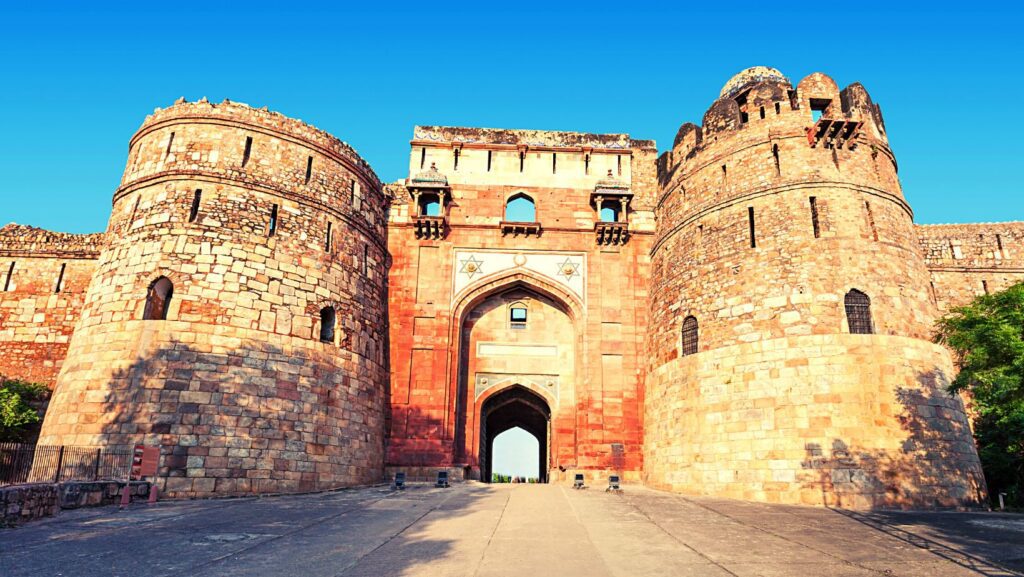
On weekends, several cafes provide live entertainment, ranging from stand-up comedy to jazz. Most of the beautiful buildings we see now date to the 1500s, despite its 2,500-year heritage. However, there is proof that there were buildings there in the third century.
The Qila-i-Kuna Mosque, which dates back to 1541 and features a single dome, is evidence of the Islamic faith’s influence on the current building design. The property covers a huge two square kilometres, and its strong walls and three massive gates look fantastic when illuminated at night. Also worth seeing is the 200-acre Mehrauli Archaeological Park, which has many important structures, some of which are more than 1,000 years old. Some features are the historic remains of Lal Kot and traces that the British lived there during Queen Victoria’s reign.


